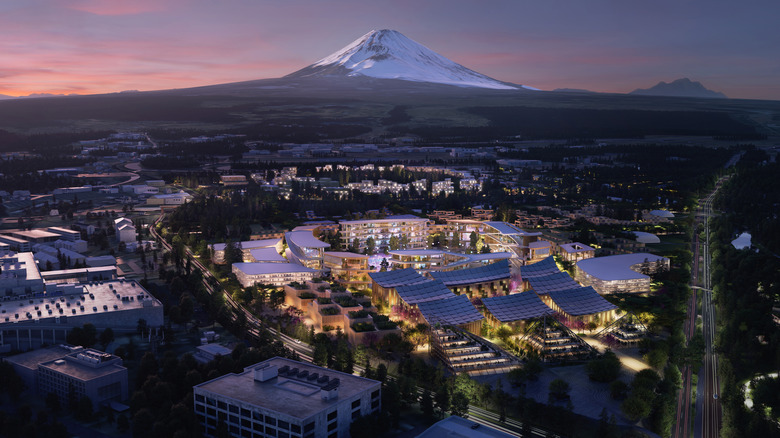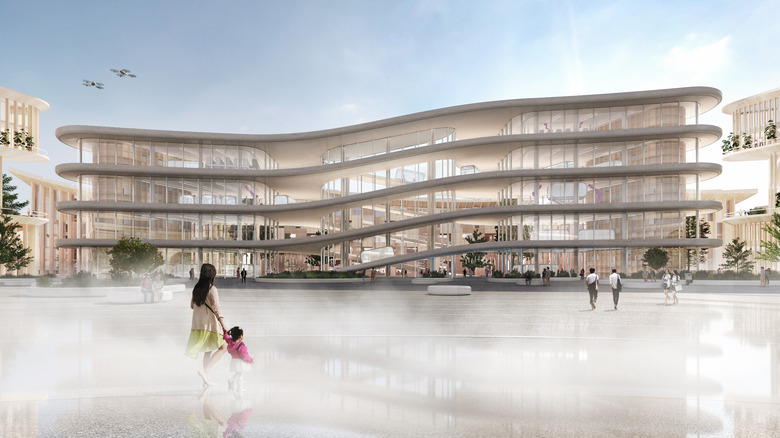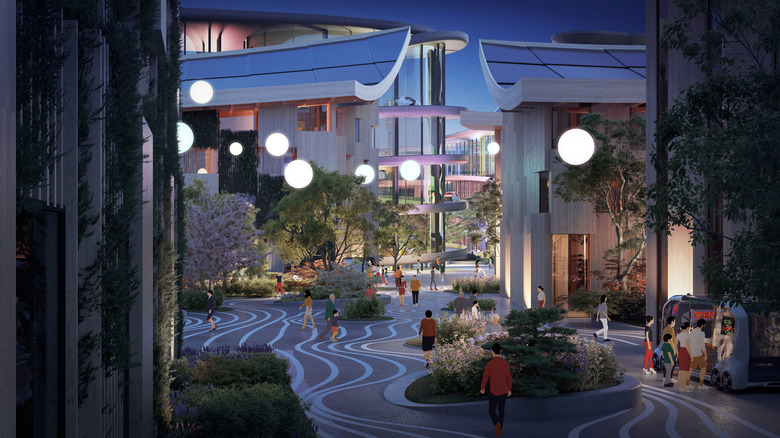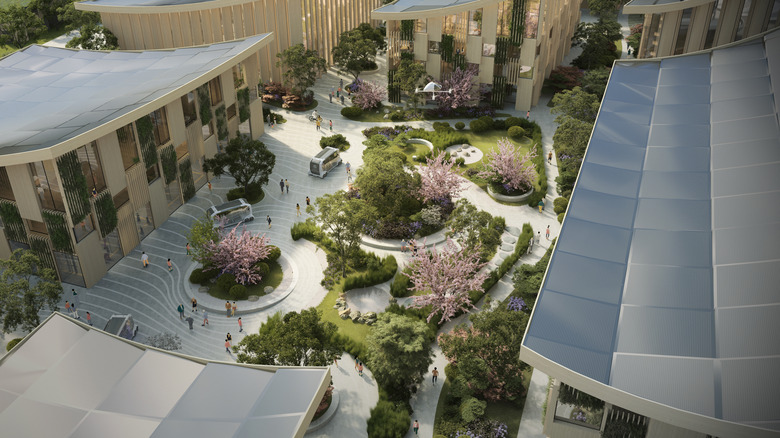Here's What Makes Japan's Futuristic City So Smart
The World Economic Forum explains that every week 3 million people move to a city around the world. Natural disasters, pandemics, transportation, carbon emissions, inequality, jobs, waste, and contamination are just some of the challenges affecting cities that will feel the stress of 68% of the global population by 2050, the organization explains.
Japan's Woven City has been highlighted as a smart city that could inspire the future. The United Nations Sustainable Development Goal 11 calls for governments to build or transform cities to be inclusive, safe, resilient, and sustainable. While cities contribute to 60% of the global GDP, they also produce 70% of the global carbon emissions — through transportation, industry, and buildings — and use 60% of all global resources. Japan wants to bring solutions to health crises like the COVID global health pandemic, climate change, globalization and isolation problems, access to food, and access to basic services and security.
During the Davos Agenda on January 19, 2022, in Switzerland, Japanese Prime Minister Kishida Fumio spoke about a new form of capitalism. Japan will use this new form of capitalism to revive its post-COVID economy with investments in green technology and human capital. To achieve this "great social transformation" that puts people and the planet first, the government, public and private sectors will work together. Led by Toyota with industry, private, and public partners and the support of the government, the Woven City is being constructed.
The Woven City
The World Economic Forum released a video revealing Japan's vision for the futuristic Woven City. The city will be a test track for smart mobility with three different roads: one strictly for autonomous vehicle roads powered and managed by AI, another green road for cyclers and scooters, and a third green road for pedestrians. Toyota calls the city a "living lab." It will run on hydrogen fuel cell energy technology and solar power. Breakthroughs for logistics, agriculture and food, IoT and robotics, healthcare and education, payments and finance, and smart houses and smart offices will be tested in the city. Now more than one year into construction on a 175-acre land that used to be a Toyota factory, the city begins to take form at the base of Mount Fuji.
The President of Toyota, Akio Toyoda, said in January 2020 that Woven City will be a "prototype city where people, buildings, and vehicles are connected through data and sensors." Under the concept of "mobility for all," fleets of autonomous electric shuttles will deliver goods, homes made of wood will reduce carbon footprint, and residents will monitor their health using AI-powered sensors while robots assist people daily. The city is expected to be home to 2,000 people and act as a lab for scientists, engineers, and researchers to test the latest technologies in real urban environments.
The architect's vision
The Danish architect Bjarke Ingels of BIG is bringing the vision of the city to life. Its plans merge industrial, commercial, and mobility with people and communities in a future enabled by advanced technology yet grounded in history, traditions, and nature. The group says the three different types of streets provide "equality" in transportation and gives areas back to green spaces. Hotels, medical clinics, houses, and workspaces all harmonize in a flexible network. The group adds that the city is called Woven because the "streets are the urban fabric," and they create a "woven grid" that expands or contracts to accommodate outdoors or indoor areas.
Underground, hidden from the view of residents, the group is designing what they call the "matternet." Basic services, hydrogen power lines, stormwater filtration, and even goods service delivery will run underground. Mass timber construction was chosen both for its long-standing tradition in Japanese architecture and for its carbon sequestration capacities. These Japanese housing modules are present throughout the entire city on every block. From central parks to Toyota's research and development facilities, robotic areas, 3D printing, labs, gardens, and houses, residents will live in a world of tomorrow under the spectacular views of Mount Fuji.
Food, energy, and data
Residents of Woven City will eat innovative food based on cutting-edge molecular science. On April 26, Toyota signed an agreement with Nissin Food Products, which is known for its instant meals. Under the agreement, the company will develop "Complete Nutrition Meals" for Woven City. Nissin says it will create delicious, healthy, and personalized nutrition meals that go "beyond instant food." These meals will provide all necessary nutrients to residents while keeping calories, salt, sugar, and fats in check. With these nutritious meals, Japan is testing solutions to solve problems like access to affordable and healthy foods, food supply chain problems, food price inflation, and food waste issues.
The energy projects of Woven City are also progressing. In March 2022, Toyota signed with ENEOS Corporation an agreement to build the first CO2-free hydrogen production and supply system for Woven City. The hydrogen refueling stations will power industries, businesses, residents, and Fuel Cell Electric Vehicles. Woven City will also use the Internet of Things, smartphones, and the expanding network of connected devices to gather and analyze data. Powered by AI analysis, the data will reveal patterns and produce policies to help fight crime, reduce pollution, decrease traffic, prepare for weather events, and much more.



